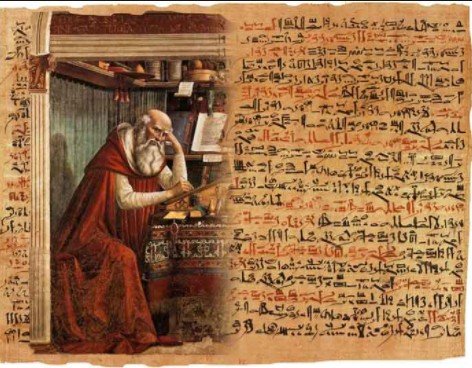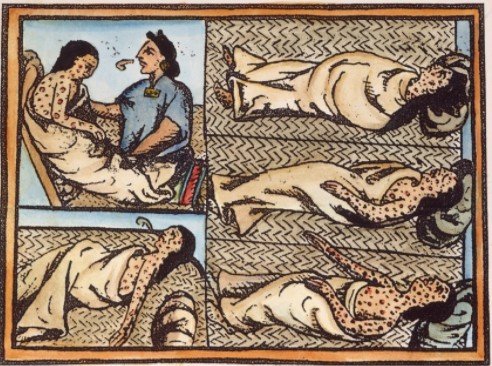
Health is the absence of disease or abnormality caused by organic, environmental, or congenital problems. To remain healthy, you will be free of outside physical, social, and other problems that could lead to disease. When/if your health becomes challenged and if you seek medical care for that challenge, you will begin to generate a health record.

Your medical/health record belongs to you and chronicles the health care you have received, where ever you have received it.
The Ancient Greeks recorded medical works in the form of case histories. These case histories included the advice given to patients about diet, statements of successful cures, lessons for surgeons and even autopsies. Record keeping became essential as the practice of keeping records was revived in the fourteenth and fifteenth centuries. By the sixteenth century there was such an interest in scholars focusing on natural specifics and the practice of using observation to collect knowledge about the natural world that collections of cases were published.
The Egyptians and Romans also kept medical records. Greek and Roman medical records tend to overlap as they both created an efficient recording system more than 2,000 years ago. The Greek and Romans has less emphasis on astrology and magic as they used a more scientific thought process while describing a patient’s physical and mental histories, although they still viewed the Gods as the deciders of one’s future.

Ancient Mesopotamia, made of the modern countries of Syria, Turkey, parts of Iran, and Iraq, understood the importance of medical records. These records also would have contained information on astrology, astronomy, and spells as well as surgery, general medicine, and dentistry.
When more modern medical documentation began, the records of a patient’s stay in the hospital was usually a few lines in a ledger that gave the patient’s name, address, chief complaint (why he or she is at the hospital), doctor’s name, the amount that the patient paid for services, and perhaps a few lines describing the type of treatment the patient received.
By 1928, the American Medical Record Association (AMRA) was founded to promote standards for the accuracy and quality of patient care documentation. The name was later changed to American Health Information Management Association (AHIMA) to identify the changing roles for managing health information that no longer consists of the paper record. Thus, the medical record evolved from a ledger to a multiform file which contains computer-generated data.
All medical professionals are required to document information into medical records. Medical records are written records which concern your medical history, symptoms, chief complaint, diagnoses, laboratory, radiology, and surgery results, treatments, procedures, medications, treatment plans, and the outcomes of treatments. Medical records can be used in legal proceedings. 
Mayans Report Smallpox spread to Yucatan Peninsula www.nlm.nih.govSome of the first notations in your health record will be data (smallest elements or units of facts or observations) which will be items, observations, or raw facts. The term data (datum = singular form) also refers to a collection of these elements. Data will be facts that are related to your diagnosis and procedures performed as well as any factors that might affect your condition.
Health information can refer to the organized data, such as your blood pressure over a period of time, information on health trends of an entire nation, or it can be the summary of information about your entire experience with your physician. Health data is important for health care communication.
Health data is used by:
- Hospital administrators when they need to make decisions about what services to offer and how best to serve the community in which they are located.
- Lawyers will use health data to demonstrate the extent of injuries suffered by a client.
- Payers, such as insurance companies, and Medicare will use health data to determine reimbursement to providers.
- Government agencies, such as the Centers for Disease Control and Prevention (CDC) National Center for Health Statistics (NCHS), use health data to monitor disease.

A personal health record (PHR) is your own copy of health information documenting your health care history and providing information on continuing patient care. A PHR can be either paper or computer-based. An individual owns his or her own health information which can be used for making health decisions. Some facilities may be hybrid with some areas using paper and others using computers.
During Hurricane Katrina, with the destruction of millions of health records, the practice of continuing patient care became nearly impossible. Clearly it was going to be necessary to find another way to maintain health records which could not be physically destroyed. Thus, the electronic medical/health record was born with the capability of health information moving with the patient.
Electronic Health Records (EHRs) are a computer-based information resource focusing on the total health of the patient while allowing access to patient information when and where needed. These records are safe and will only be shared with your permission. Health care is a shared effort. The EHR represents the ability to easily share medical information among stakeholders and to have a patient’s information follow him or her through the various modalities of care engaged by that individual. “EHRs are designed to be accessed by all people involved in the patient’s care—including the patients themselves. Indeed, that is an explicit expectation in the Stage 1 definition of “meaningful use” of EHRs.” (Healthhit.gov, 2017)
An EHR results from computer-based data collection. Documentation can be made in a laptop within a patient’s room, tablets, hand held devises, etc. which gives almost instant up to date knowledge of what is going on with a patient.

The EHR is used for patient care, as a legal document, for statistics, for coding, and performance improvement. These records are secure, point-of-care, patient centric, real-time information for clinicians. A fully useful EHR streamlines and automates medical care as it integrates patient history, demographics, list of current medications, allergies, patient problem lists, physician clinical notes, nurse’s progress notes and information from hospitalizations, patient’s medical history, family history, immunization status, records of hospitalizations, insurance information, and follow-up notes.
Your health information can be accessed by any healthcare provider you see. EHRs allow for efficient storage and retrieval of information. Test results can be shared quickly and will keep you from having duplicate tests performed. With the use of EHRs, there is less chance of medical errors occurring. With 400,000 reported preventable medical errors which are the third leading cause of death, behind heart disease and cancer.
The health world operates with the use of the health record which is quickly becoming the electronic health record. Easy, shared access of important health information is the wave of the future.
References
- gov. www.healthit.gov
- Joint Commission for Accreditation of Hospital Organization (JCAHO), jointcommision.org

Carol graduated from Riverside White Cross School of Nursing in Columbus, Ohio and received her diploma as a registered nurse. She attended Bowling Green State University where she received a Bachelor of Arts Degree in History and Literature. She attended the University of Toledo, College of Nursing, and received a Master’s of Nursing Science Degree as an Educator.
She has traveled extensively, is a photographer, and writes on medical issues. Carol has three children RJ, Katherine, and Stephen – one daughter-in-law; Katie – two granddaughters; Isabella Marianna and Zoe Olivia – and one grandson, Alexander Paul. She also shares her life with her husband Gordon Duff, many cats, and two rescues.
ATTENTION READERS
We See The World From All Sides and Want YOU To Be Fully InformedIn fact, intentional disinformation is a disgraceful scourge in media today. So to assuage any possible errant incorrect information posted herein, we strongly encourage you to seek corroboration from other non-VT sources before forming an educated opinion.
About VT - Policies & Disclosures - Comment Policy




Comments are closed.